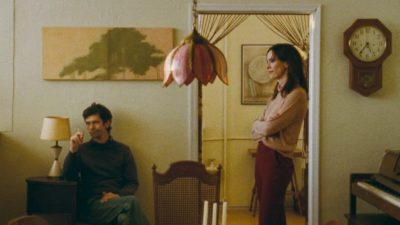Two Requiems. In one case, the composer died during the process, and in the other, fortunately, both the composer and the recipient are alive and well. I talked to György Orbán, a contemporary composer born in Marosvásárhely (Târgu Mures), about how his 2004 Artisjus Prize-winning Requiem came about, and what it will be like to hear it soon, paired with the legendary Mozart Requiem at the All Saints’ Day concert at the opera house.
What is the story behind your Requiem?
I wrote it for a childhood pal who became one of my best friends in adulthood. The backstory is that he was my dentist, but he never accepted any money from me. When I was trying to sort things out, he told me to write him a Requiem one day. I said: OK, but since we don’t know which of us will outlive the other, I’d rather write it now – and he agreed. It is a funny little anecdote, of course, but there is also the aspect that we both have a lot of memories in common, and unfortunately we have seen many of our common people die, and this Requiem is also a tribute to our parallel fates, our childhood and our hometown Marosvásárhely.
But to answer the question beyond the personal background story: if a composer writes masses, as I do, they cannot leave out the Requiem. It’s a very representative genre and, unfortunately, always topical, because we have always had and will always have death around us. Music literature is full of great masterpieces that are inimitable: Verdi’s Requiem, for example, is overwhelmingly magnificent. But there are also lesser-known requiems, too, like Fauré among the French, Cherubini among the Italians, and so on. Huge, attractive and depressing examples from all over the world, which almost whisper to the contemporary composer: try it yourself…!
Why was Mozart’s Requiem chosen to be at the same concert?
Mozart’s Requiem is, of course, a rather well-known one, with its tragic story of how his student had to finish after the master died while composing it. And Mozart is Mozart, an outstanding composer even among the outstanding. He was a particular musician, with abilities that we cannot even imagine, so we simply call him a genius. A magically skilful technique, a fantastic memory, a musical tradition cultivated in an Orpheusian manner, in which the emphasis was not on aesthetics or theory, but somehow directly got to the heart of the music. What is that? Good question! Something intangible. And all the while, Mozart was incorporating the legacy of the past into his own oeuvre with a fantastic instinct.
The most powerful movement in the Mozart Requiem, for example, is a particular fugue in D minor, which is not entirely original. In principle, the fugue was already a more-than-hundred-year-old genre, but Mozart’s fugues fit seamlessly into the music of his own time. Many people dislike his music precisely because it is too rococo, too delicate, too fragile. Here, however, he was able to use a genre that was already old, but tried and tested and proven, precisely for his own artistic purposes. It’s like when Picasso’s 20th century paintings show the influence of Velázquez and the Spanish Baroque: we instinctively feel that it belongs there. This is how art moves on, taking in the old, tried and tested values.
What was Mozart’s inspiration when he wrote a fugue?
There is a very special connection between Mozart and Handel’s music, you could say that Mozart ‘stole’ Handel’s F minor fugue from the Messiah. He discovered something unique in this masterpiece, something that had never existed before, and copied it for himself. But he not only wrote it down, he also corrected it. This Mozart version of the Messiah, outside of orchestras specialising in early music, is the one most often played today, because he did a great job of combining faithful and admiring copying with a fine adaptation of the work, which was basically a good thing for him. It’s a strange way of respecting tradition when a genius allows himself to improve a little on the basic work, because he has something to add to it while copying it! It is true, however, that there are also examples of Mozart leaving the original work unchanged: he did not rewrite a single note while copying Bach.
Nevertheless, even though the Requiem is based on a tradition that goes back many centuries, we must also see that every movement is inimitably original. There are some fantastic ideas, such as the ‘hell’, the Dies Irae movement, which is only two minutes long, but in which, without any particular difficulty, he draws on amazing musical solutions and emotions.
As a contemporary composer, how do you see the relationship between the music of the past and the present?
I think that, although it is natural to seek actualities of our times, we have to face the fact that early music is so much better than what we write. Even though we know that these works were written two or three hundred years ago, they still sound absolutely fresh today. I have taught composition for forty years, and for me, passing on the knowledge involves a humble mindset: knowing our place. Writing a Requiem is a very challenging genre, one could say that after Verdi it is impertinent to try it, but we are still experimenting. That’s how I look at my Requiem, trying to tell my own version. And as I am the Composer of the Season in Müpa Budapest this year, they have given me the opportunity to have my contemporary yet still traditional and audience-friendly Requiem performed on stage, alongside a giant like Mozart. It is a great honour and I hope that the audience will come away from this concert with a lasting experience.

























Comments